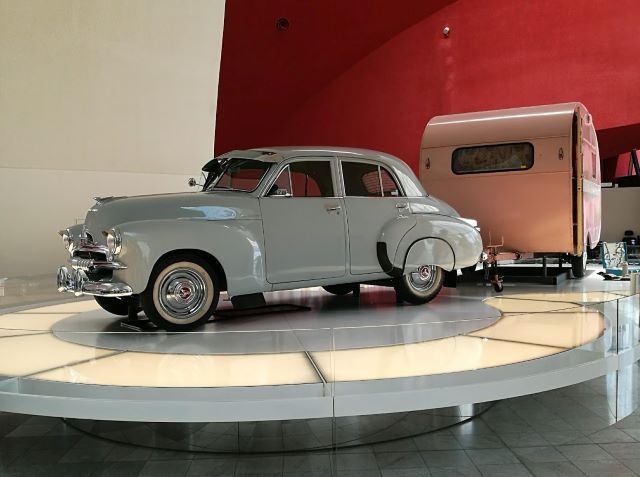
Narrative of progress 2
On Monday 17 February, GM announced the end of the Holden. Six hundred people will lose their jobs by June. The promises made of ongoing commitment to the brand when manufacturing ceased in Australia did not materialise, and were never likely to.
Holden and the Australian story are deeply inter-woven through deliberate cultivation and personal association. The power of the Holden is strongest for people who grew up with them. It felt possible to be sad even if you’d never owned a Holden, especially if you live in Port Melbourne where the first Holden was made.

British born Sir Laurence Hartnett became the managing director of General Motors-Holden in Australia in 1934. He made the bold move of GMH from City Rd, South Melbourne to the then waste land of Fishermans Bend – the first major industry to locate there. The site was chosen for the vast amount of space available and the proximity to rail and the River. Part of the factory was built over the third green of the former Victorian Golf Club as this photograph illustrates.
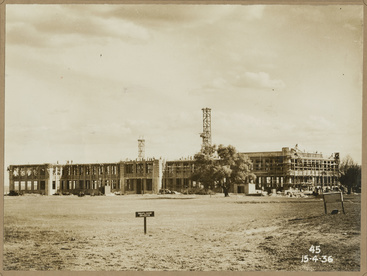
State Library of South Australia BRG213/73/4/VOL3/37
We are exceptionally fortunate, through the State Library of South Australia, to be able to leaf through Hartnett’s photograph album in which he documented the construction of the factory and administration buildings. His excitement and enthusiasm for the project comes through as does a sense of the scale of the undertaking. It was only seven months from Premier Dunstan turning the first sod in February 1936 to September when Prime Minister Lyons opened the plant and the first car came off the assembly line.
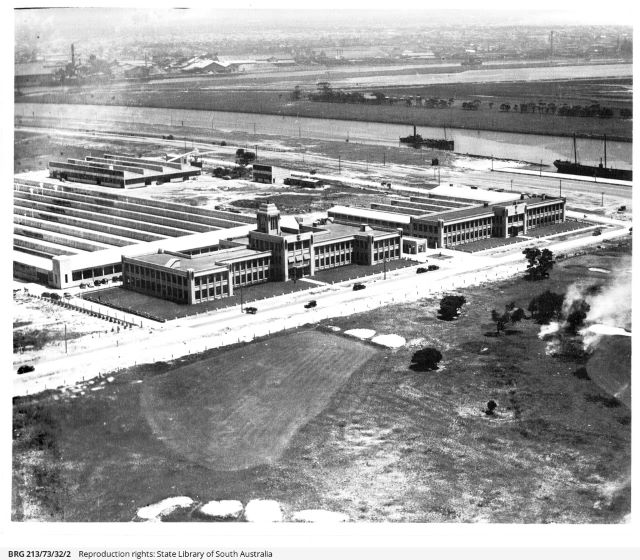
State Library of South Australia BRG 213/73/32/2
GMH was heavily involved in the war effort – assisting in the production of guns, aircraft, vehicles and boats. The war time experience convinced Hartnett of the need to build up Australia’s capacity to manufacture vehicles. He became an insistent champion and advocate for an all Australian car. In due course, he fell out with his American superiors for exhibiting an Australian trait he had cultivated – independent thinking.
A Social Centre was a necessity in such a large factory and one was built in 1945. It became a hub, not just for meals for the large number of workers, but for many other social activities. The focal point of the Social Centre was a stage flanked on either side by murals painted by employee Eileen Robertson. The murals depict a narrative of the progress of transport from lumbering oxen on the left to the speed and forward momentum of bullet like trains on the right. The mural is cherished by Art Deco fans.
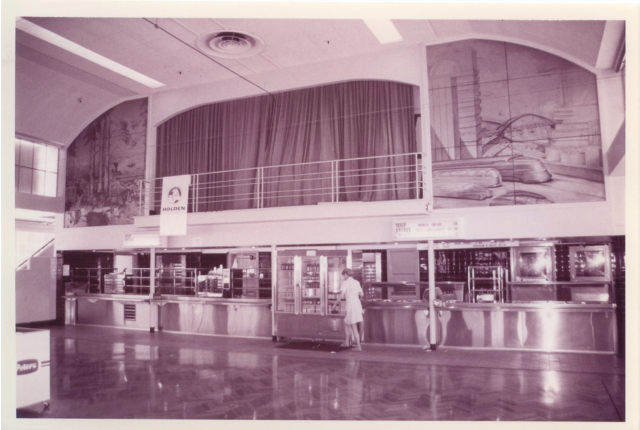
The launch of the Holden car was not just one, but a series of, carefully planned events to prepare the public and the dealer network for the new Australian car. People had to be persuaded that an Australian car would be up to the job. The Holden was promoted as neither too small like the British models nor too big like the American models. It was just right for Australian conditions. Port Melbourne people may even have had a preview as the early production vehicles were test driven around the area.
The car may have been Australian but the marketing and promotion drew on American style and experience. On launch day, 29 November 1948, distinguished guests were dropped off at the Social Centre. Employees, acting as hostesses for the day, wore red gowns matching the leather seats of the car that was revealed on the stage of the Social Centre. The catering was luxurious after war time austerity. That evening and throughout the week searchlight beams illuminated the complex – their first use in peace time.
While there has been a flood of nostalgia for the Holden in a fond retro kind of way, there has been less attention paid to the innovation, energy and sense of purpose that characterised manufacturing in Fishermans Bend in the war and immediately post war years. During the war, many essential supplies were unavailable leading to specifically Australian adaptations and innovations and a high degree of collaboration between all involved in the manufacturing process.
It is that legacy of innovation in engineering and manufacturing that is sought to be built upon on the former GMH site.
Do you remember that the state government bought the 37 ha site in September 2016? Since then the University of Melbourne has bought part of the site and committed to moving its engineering and design school to Fishermans Bend by 2024. Their plan is predicated on a tram being delivered by then to bring students to the campus.
In December 2019, former employees of GMH nominated various buildings on the site, including the Social Centre, for listing on the Victorian Heritage Register. The nomination was supported by the Director of Heritage Victoria. In February, the Planning Minister Richard Wynne called in the matter from Heritage Victoria so that he can consider the heritage of the past in association with the plans for the future.
Many fabulous resources drawn upon for this piece
Laurence Hartnett Big Wheels and Little Wheels as told to John Veitch
Don Lofffler She’s a beauty! The story of the first Holdens (available from City of Port Phillip Library Service) For a detailed account of the launch of the Holden pp73 – 92
Jo Rich Laurence John Hartnett, 1898 – 1986 Australian Dictionary of Biography
State Library of South Australia Photograph album of General Motors-Holden’s Limited Fishermen’s Bend Plant
University of Melbourne Fishermans Bend campus: bringing research to life at an industrial scale

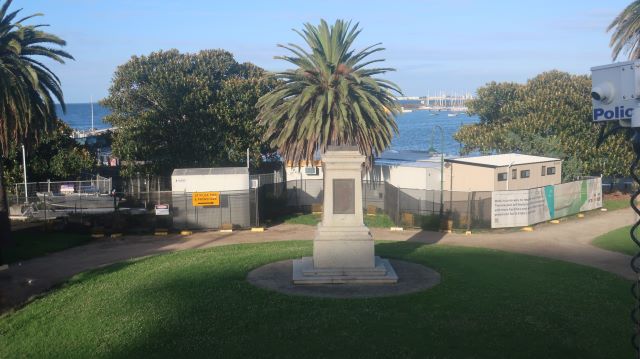
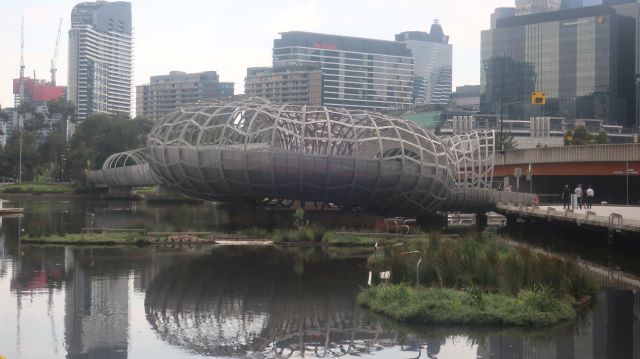

Leave a Reply